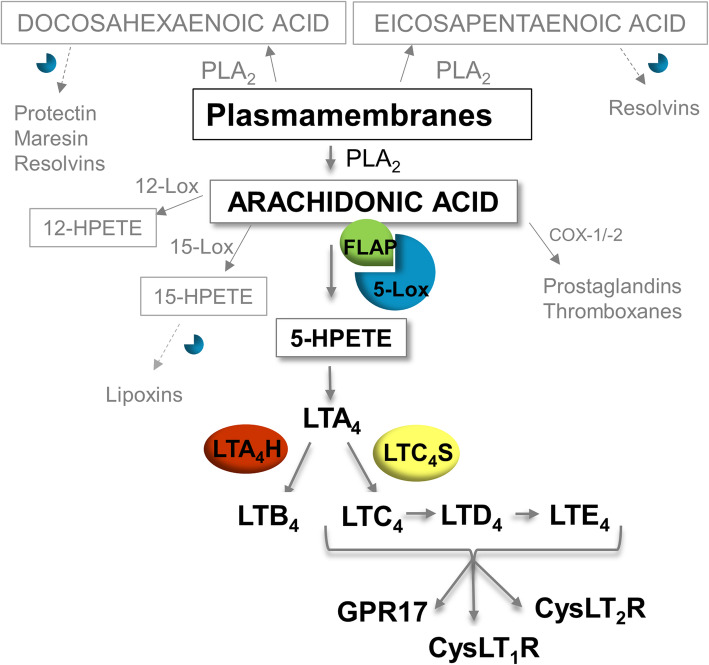Fig. 1.
LT biosynthesis is part of metabolism of the omega 6 polyunsaturated arachidonic acid (AA), which is cleaved from plasmamembranes by phospholipase A2 (PLA2). AA is a substrate for several lipoxygenases. For the production of LTs it is first converted into 5-hydroxy-peroxy-eicosatetraenoic acid (5-HPETE) and afterwards into LTA4, both steps mediated by a complex of the enzyme 5-lipoxygenase (5-Lox) and 5-lipoxygenase activating protein (FLAP) [22]. From LTA4 arise either Leukotriene B4 (LTB4) formed by epoxide hydrolase or Leukotriene C4 (LTC4) formed by LTC4 synthase, which can be further metabolized to LTD4 and LTE4 [23]. LTC4, LTD4 and LTE4 are summarized under the term cysteinyl-leukotrienes (CysLTs). CysLTs display different affinities towards the receptors cysteinyl-leukotriene receptor 1 and 2 (CysLT1R [24]), CysLT2R [25]) and G-protein coupled receptor 17 (GPR17 [26, 27]). The enzyme 5-Lox is also involved in some steps of biosynthesis of specialized pro-resolving mediators from omega 3 poly-unsaturated fatty acids (DHA – docosahexaenoic acid; EPA – eicosapentaenoic acid)

